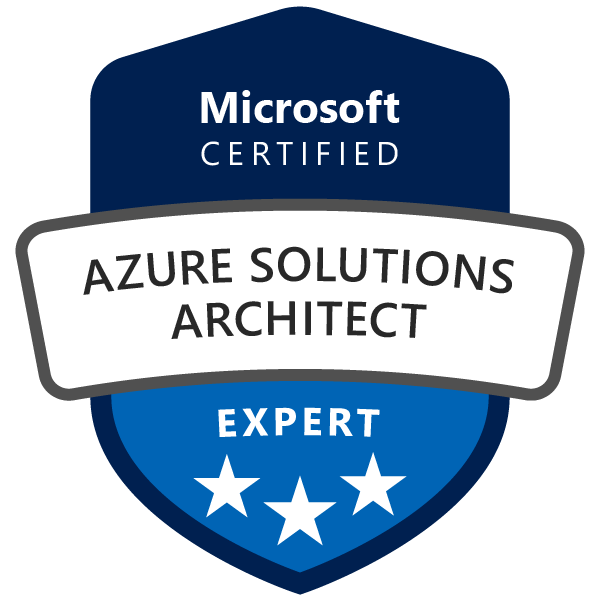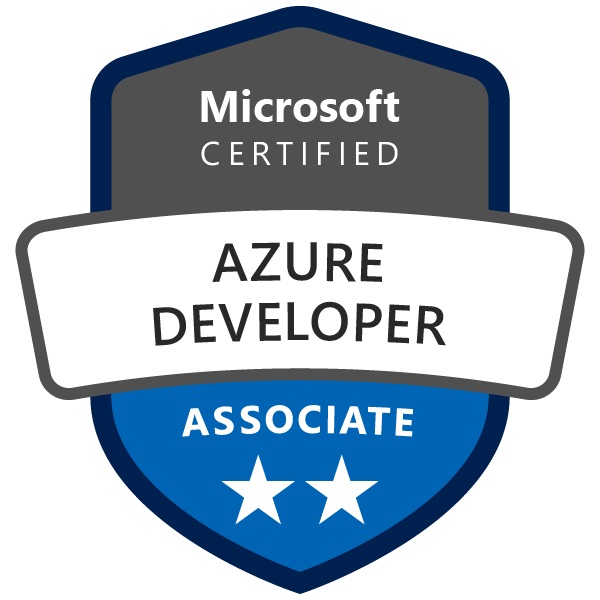Earning the AZ-204: Developing Solutions for Microsoft Azure certification can seem daunting. This certification not only validates your skills and knowledge in Azure but also serves as a stepping stone towards the DevOps Engineer Expert certification.
This blog post aims to help you understand the certification process and provide you with a roadmap to success. From understanding the exam content to leveraging community resources, from gaining hands-on experience to acing practice assessments, this article will walk you through each step. Whether you are a seasoned Azure professional or a fairly newcomer to Azure, this guide will equip you with the tools and insights you need to confidently tackle the AZ-204 exam.
Preparing for the Exam
Before you even start preparing for the exam, it’s crucial to familiarize yourself with the exam’s content and the required passing score. All this information is readily available on the Certification Exam Page. The exam measures your skills in the following areas:
- Develop Azure compute solutions (25–30%)
- Develop for Azure storage (15–20%)
- Implement Azure security (20–25%)
- Monitor, troubleshoot, and optimize Azure solutions (15–20%)
- Connect to and consume Azure services and third-party services (15–20%)
Microsoft Learning Paths
The Certification Exam Page provides links to all the articles that make up Microsoft’s Learning Path for the AZ-204 certification. This Learning Path is divided into twelve distinct areas, each containing one to four modules. Each area focuses on a specific technology, such as Azure Functions or CosmosDB.
For convenience and easy access, especially during commutes or gym sessions, I’ve compiled all the Learning Paths into a Word document. However, be aware that this document spans nearly 300 pages. Therefore, navigating through all the Learning Paths will require a considerable amount of time.
Azure Documentation
Microsoft provides an extensive Azure Documentation that encompasses a thorough examination of each Azure service. This resource not only offers valuable recommendations for service implementation and best practices, but it also includes instructive tutorials and quick-start samples to help you get started with the services you are interested in.
Community-Provided Resources
In addition to the resources provided by Microsoft, the community also offers a wealth of valuable materials. If you are a fan of video content, John Savill’s Youtube Channel comes highly recommended. He provides a variety of videos to help you prepare for several exams, as well as in-depth explorations of various Azure-related topics.
Google is always a reliable source of information, but Reddit can also be incredibly helpful. For general Azure and certification topics, check out the Azure Subreddit or the Azure Certification Subreddit. If you are interested in delving into a specific topic, such as CosmosDB, there’s likely a dedicated Subreddit for that as well.
Dive into Azure
Regardless of how much you study about Azure, nothing can substitute the value of practical, hands-on experience. The exam will pose detailed questions about service configuration and what to watch out for when using them. This level of understanding can only be achieved through consistent interaction with all the services.
If your work doesn’t provide an opportunity to engage with the services covered in the exam, consider creating a free Azure account and implementing your own projects. Begin with a modest project, such as a web application running in a container, and gradually expand. Once your container is operational, incorporate a CosmosDB, monitoring, and then an Azure API Management.
Furthermore, allocate some time to explore each pane in the Azure Portal for each service. Ensure you comprehend the function of each pane and how it can be utilized to configure this service or establish connections to other services.
Free Practice Assessment
When you feel prepared for the exam, it’s time to take the complimentary practice assessment available on the Certification Exam Page. Alternatively, you can access the free practice assessment directly.
The assessment comprises 50 questions and may serve as a stern reality check. Typically, my initial scores never exceed 70% (more often in the 50%-60% range), despite having several years of experience with Azure and likely more exposure than the average examinee. Don’t be disheartened by a less-than-stellar result. The assessment is a tool to highlight the areas where you need to invest more time and to give you a glimpse of the exam’s question format. Moreover, Microsoft provides an explanation for each question, clarifying why the correct answer is superior to the other options.
Feel free to retake the assessment as many times as necessary until you gain confidence.
MeasureUp
MeasureUp is the officially endorsed test platform by Microsoft. The AZ-204 practice exam on this platform features 127 test questions, mirroring the actual certification exam’s format with case studies, single-choice, multiple-choice, and drag-and-drop questions.
Compared to other resources mentioned here, the practice tests on MeasureUp are on the pricier side, with costs ranging from 99€ for 30-day access to 119€ for a one-year subscription or downloadable version. Do often have sales bringing down the price by 30-50% though.
The website’s user experience may leave something to be desired. For instance, locating the correct place to take the practice exam can be a challenge, the website’s speed is often slow, and you may occasionally find yourself logged out while taking a practice test. However, once you start the practice test, the experience is smooth (provided you don’t get logged out). You even have the option to customize the test exam to include random questions, questions you previously answered incorrectly, or questions you haven’t seen in a while.
The difficulty level and format of the practice questions are on the same level as you will encounter in the real exam, making it an excellent preparation tool.
While MeasureUp may be expensive, it’s worth the investment. I strongly recommend utilizing it before taking the exam.
Study Strategies
Study methods vary from person to person. Some individuals prefer video content, others favor reading, and some learn best through hands-on experience.
My advice is to explore all these methods and identify what suits you best. In my case, having prior experience with all the services covered in the exam and then thoroughly studying the Learning Path was sufficient to pass the exam. The MeasureUp practice exam and the free practical assessment were particularly useful in highlighting areas that needed more attention.
Gaining enough hands-on experience is also crucial. My prior experience greatly aided my understanding of the topics when I studied the documentation. I would suggest creating most of the services covered in the exam, experimenting with them, and familiarizing yourself with all the panes of the service in the Azure portal.
Lastly, I highly recommend investing in the MeasureUp practice exams. Not only are they worth the cost, but they also provide insight into the format of the exam questions. Achieving high scores in these practice tests can significantly boost your confidence.
Taking the Exam
You have two options for taking the exam: at an official test center or from the comfort of your home. I’ve experienced both, and while I used to take exams at a test center, I now opt for online tests. Both methods administer the exact same exams, so choose the one that best suits your comfort level.
The exam duration is 120 minutes, but you should allocate approximately 150 minutes to account for the ID verification process and a few survey questions from Microsoft. This provides enough time to review your answers multiple times. In my experience, I was able to complete the exam in about an hour.
The exam contains between 40 and 60 questions, I had 54. To pass, you need to score at least 700 out of 1000. It is important to note that Microsoft employs a dynamic scoring system, meaning that a score of 700 out of 1000 does not equate to 70%.
Upon completion of the exam, your score should be displayed on the screen immediately. If not, expect to receive an email with your test score within the next hour. I received an email almost immediately after finishing the exam with my score of 787.
After passing the exam, you get the Azure Developer Associate badge.
Taking the Exam at a Test Center
A few years ago, I took a test at a test center, and it wasn’t the most enjoyable experience. Firstly, you have to commute to their location, ensure punctuality, and carry an official ID. Then, you are required to store all your personal items, such as your wallet, phone, and watch, in a locker before being escorted into a computer-filled room to take your exam. My test center had a mouse from the 90s, which was quite challenging to work with. The room was crowded with other test takers, making it somewhat noisy.
However, there’s nothing inherently wrong with taking the exam at a test center, it iss just a matter of personal preference.
Taking the Exam Online
Opting to take the exam from home offers a more convenient alternative. This requires a stable internet connection, a webcam, and a microphone. Note that headphones are not permitted.
The comfort of taking the exam from home is unparalleled for me. Not only does it eliminate the need for travel, but it also allows you to use your own computer, mouse, keyboard, and chair, which you are already used to. The check-in process begins 30 minutes before the scheduled exam time. You will receive a link on your phone, which you will use to take a picture of your ID and yourself, followed by four pictures of your surroundings. You will then be placed in a waiting queue. After a few minutes, a proctor will contact you, either via voice message or chat, and may ask you some questions, such as requesting a view of your desk. Once they initiate the exam, the official test begins.
Upon completion of the exam, your score and performance in each exam area will be immediately displayed.
Difficulty of the Exam
In my experience, the AZ-204 exam was more challenging than the Azure Solutions Architect Expert (AZ-303 and AZ-304) and the Azure DevOps Engineer Expert (AZ-400) exams. I was particularly surprised by some questions that delved into the tiniest details of an Azure service. Also some questions asked for the exact syntax of a PowerShell or Phyton script. Some questions were also poorly worded to the point where I couldn’t understand them. I had a bad feeling that I would fail the exam before I finished it. However, I ended up passing with a score of 787. Although it is my lowest score to date, a pass is still a pass.
During the exam, it is crucial to read the questions carefully. A single word can sometimes alter the answer to a question. If you come across a question that leaves you stumped, take a moment to breathe and try to eliminate incorrect answers. Often, one or two answers are blatantly wrong, leaving you with only two potential answers. If you are still unsure, make an educated guess. There’s no penalty for incorrect answers, so never leave a question unanswered!
Conclusion
The AZ-204: Developing Solutions for Microsoft Azure certification exams demand extensive studying and hands-on experience but are entirely manageable with adequate preparation. This certification also serves as a prerequisite for the DevOps Engineer Expert certification. I initially undertook the AZ-204 solely for the DevOps Expert certification, but I am glad I did because it allowed me to learn several new aspects about Azure.



Comments powered by Disqus.